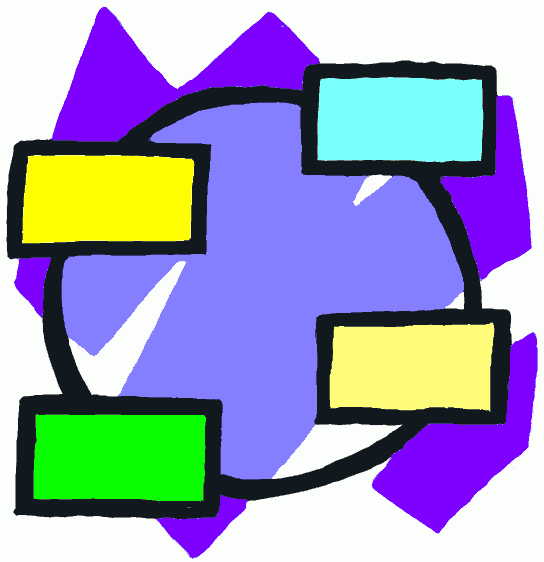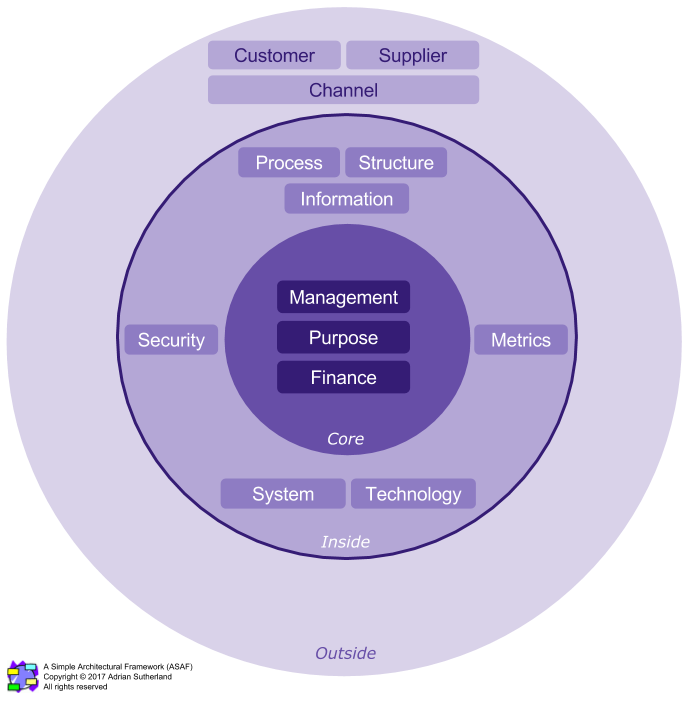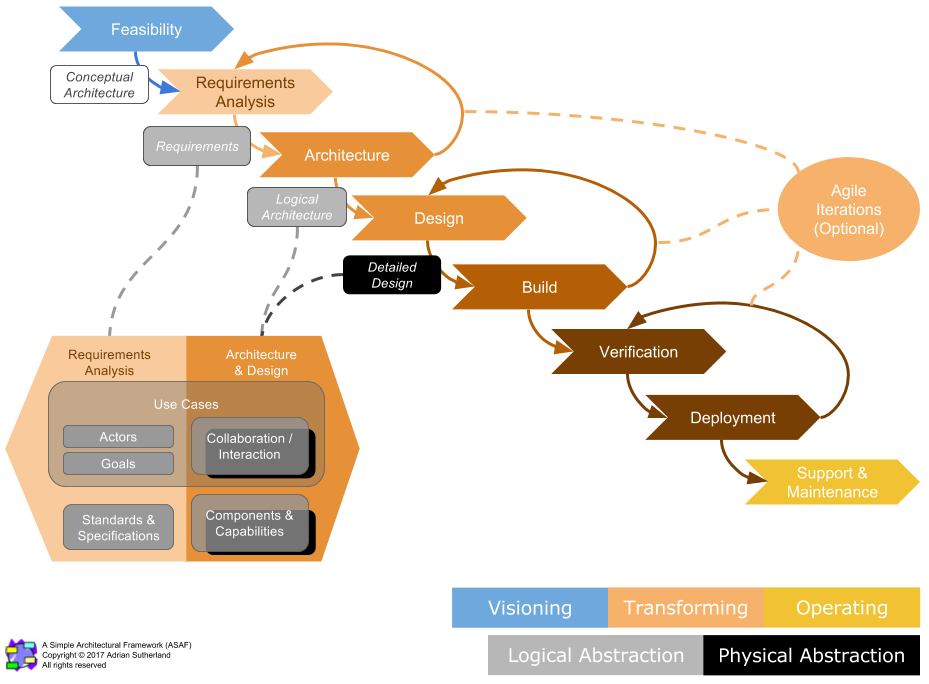A Simple Architectural Framework (ASAF)
ASAF is an open architectural framework being developed by Adrian Sutherland. It is influenced by a number of other frameworks including Zachman and TOGAF. Its design aim is to be simple, usable and purposeful - to allow architects to concentrate on architecture and not the framework. The structure of the framework is intended to imply the methodology to create and implement an architecture and is focused to support transformational initiatives.
Aspects
An ASAP architecture is divided into Aspects which together span the institutional and transformational scope. These are organised as being outside, inside or core to the institution.
Outside aspects are those covering external parties:
- Customer
- Supplier - supply chain
- Channel - both technical (e.g. digital) and business (e.g. intermediaries)
Inside aspects are the institution's operational concerns:
- Process - process and rules
- Structure - organisation
- Information - data
- Security - technology and business in one place because of its criticality
- Metrics - including non-functional requirements
- Systems - application
- Technology - infrastructure
Core aspects are the institution's policy and management concerns:
- Management - Overall Management
- Finance - Financial control
- Purpose - Enduring aims
Process Towers (VTOG)
The process towers represent the four core process areas for enterprise architecture and more generally the institution's operations and transformation.
- Visioning - the future or ideal target
- Transforming - the initiatives, programme or roadmap to move towards the vision
- Operating - running current institution
- Governing - Governing the enterprise architecture and related concerns
The ASAF Matrix
This matrix shows the architectural outputs / artifacts created across all Aspects and Towers.
Abstraction (CLP)
Three levels of abstraction are defines:
- Conceptual - communicating the concepts of the architecture
- Logical - an accurate refection of the architecture but without implementation specific details
- Physical - the as-built complete specification
Methodology
The processes (Visioning, Transforming, Operating and Governing - VTOG) - and the levels of abstraction (Conceptual, Logical and Physical - CLP) provide the "clue" about how to go about achieving the architecture, design, implementation and running of a transformation.
The following diagram shows the system transformation approach. Note that the approach can be configured between Waterfall and Agile as required.






